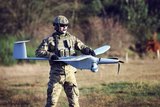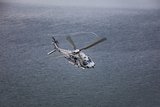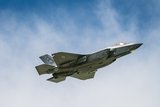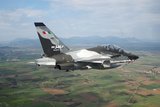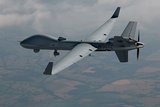Avalon 2025: Australia set to receive Apaches as Tiger retirement begins
US Army Apache attack helicopter at the Australian International Airshow at Avalon – a sign of things to come with Australia’s version on the way. (Photo: author)
Boeing expects to deliver the first four Apache AH-64E attack helicopters to the Australian Army before the end of this year as it announced that the first aircraft, designated AT001, had entered final assembly.
Speaking at the Avalon Australian International Airshow near Melbourne this week, army officials said initial operating capability was set for 2028 and all 29 aircraft would be delivered before the end of that year. These plans will run alongside the retirement of the army’s Tiger attack helicopters which are expected to go out of service before the end of 2026, meaning there will be at least a year
Already have an account? Log in
Want to keep reading this article?
More from Air Warfare
-
![2025 air market review: European defence independence, next-gen tech and export concerns dominate]()
2025 air market review: European defence independence, next-gen tech and export concerns dominate
This year’s (geo)political turmoil has challenged many long-prevailing assumptions, leading to far-reaching consequences for air forces and their supplier bases in industry worldwide – with five key trends in review for 2025.
-
![Portugal signals interest in establishing A-29N final assembly line]()
Portugal signals interest in establishing A-29N final assembly line
As the launch customer for the NATO-configured variant, Portugal also took delivery of the first five A-29N aircraft from its order for 12, placed in 2024.
-
![Leonardo signs contract on Austria’s M-346 aircraft order]()
Leonardo signs contract on Austria’s M-346 aircraft order
The first of the 12 M-346 aircraft are expected to be delivered to the Austrian Air Force by 2028, according to the company.
-
![2025 UAV market review: $7.8 billion in new contracts signed as US leads spending]()
2025 UAV market review: $7.8 billion in new contracts signed as US leads spending
Qatar and Indonesia followed the US’s high spending on new uncrewed aerial vehicle contracts across 2025, while MALE and micro drones and loitering munitions were particularly popular subcategories this year.








